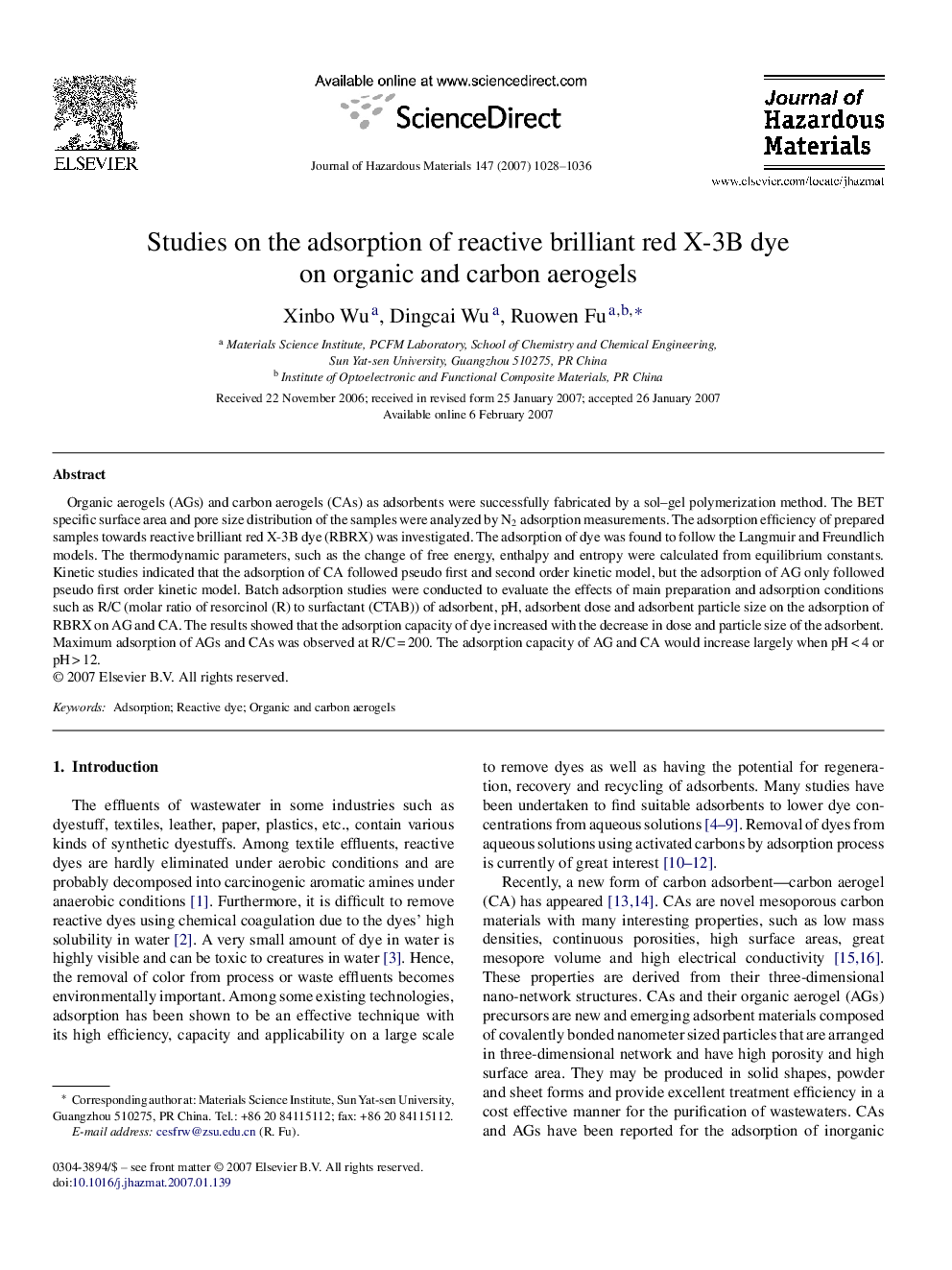| Article ID | Journal | Published Year | Pages | File Type |
|---|---|---|---|---|
| 583899 | Journal of Hazardous Materials | 2007 | 9 Pages |
Abstract
Organic aerogels (AGs) and carbon aerogels (CAs) as adsorbents were successfully fabricated by a sol-gel polymerization method. The BET specific surface area and pore size distribution of the samples were analyzed by N2 adsorption measurements. The adsorption efficiency of prepared samples towards reactive brilliant red X-3B dye (RBRX) was investigated. The adsorption of dye was found to follow the Langmuir and Freundlich models. The thermodynamic parameters, such as the change of free energy, enthalpy and entropy were calculated from equilibrium constants. Kinetic studies indicated that the adsorption of CA followed pseudo first and second order kinetic model, but the adsorption of AG only followed pseudo first order kinetic model. Batch adsorption studies were conducted to evaluate the effects of main preparation and adsorption conditions such as R/C (molar ratio of resorcinol (R) to surfactant (CTAB)) of adsorbent, pH, adsorbent dose and adsorbent particle size on the adsorption of RBRX on AG and CA. The results showed that the adsorption capacity of dye increased with the decrease in dose and particle size of the adsorbent. Maximum adsorption of AGs and CAs was observed at R/CÂ =Â 200. The adsorption capacity of AG and CA would increase largely when pHÂ <Â 4 or pHÂ >Â 12.
Keywords
Related Topics
Physical Sciences and Engineering
Chemical Engineering
Chemical Health and Safety
Authors
Xinbo Wu, Dingcai Wu, Ruowen Fu,
